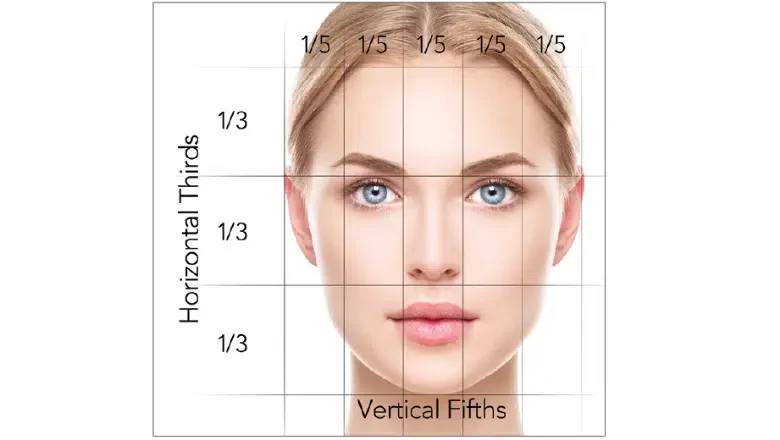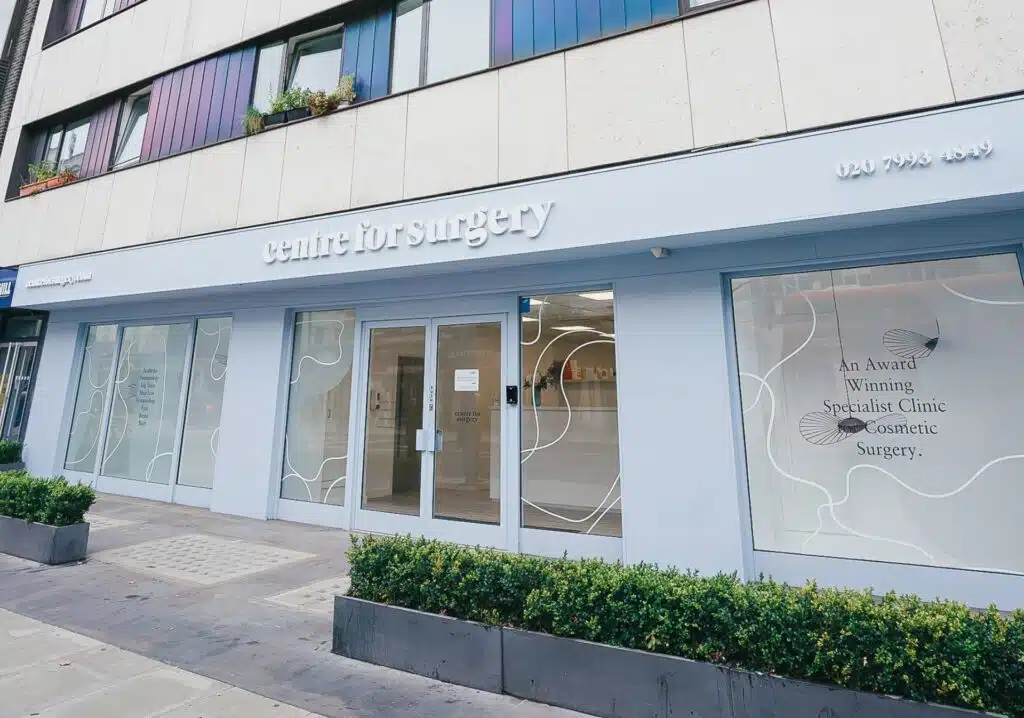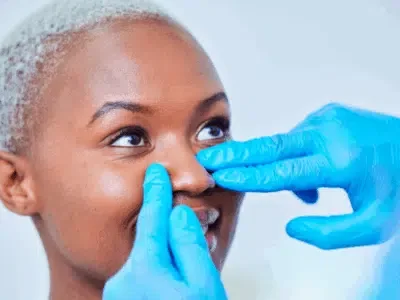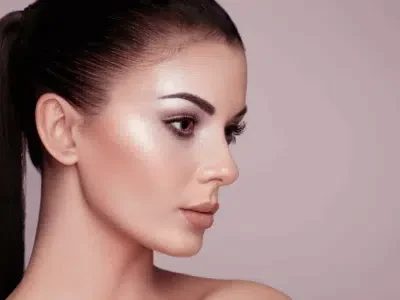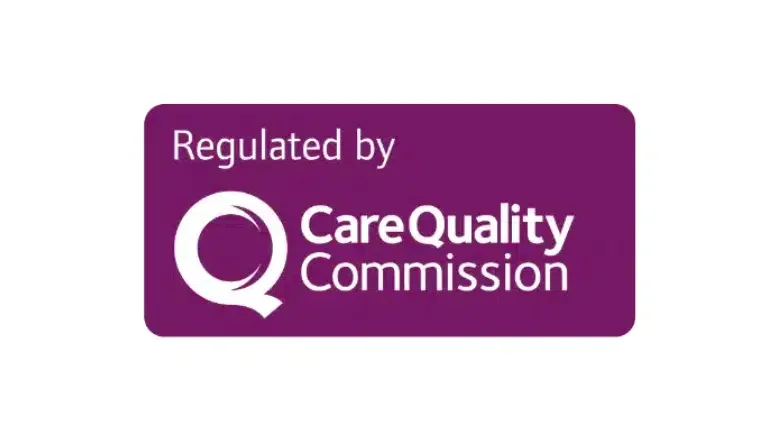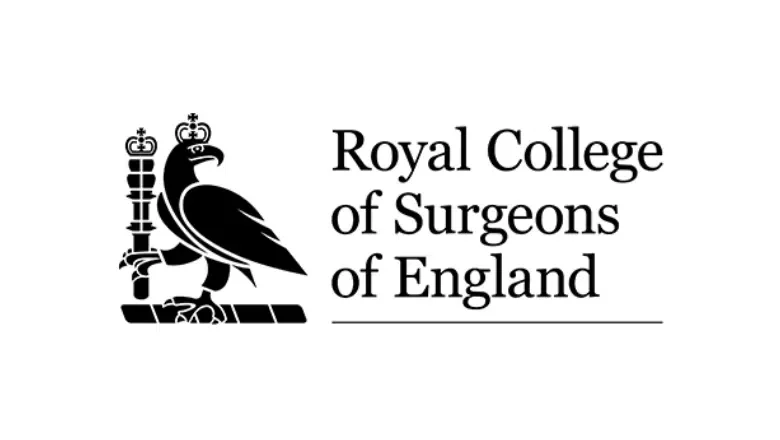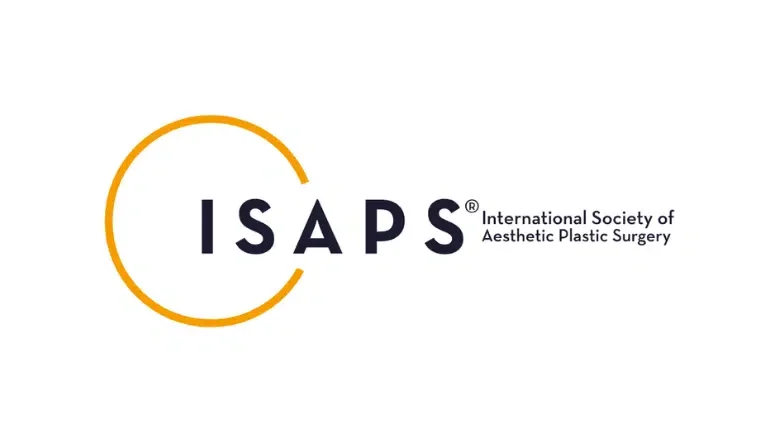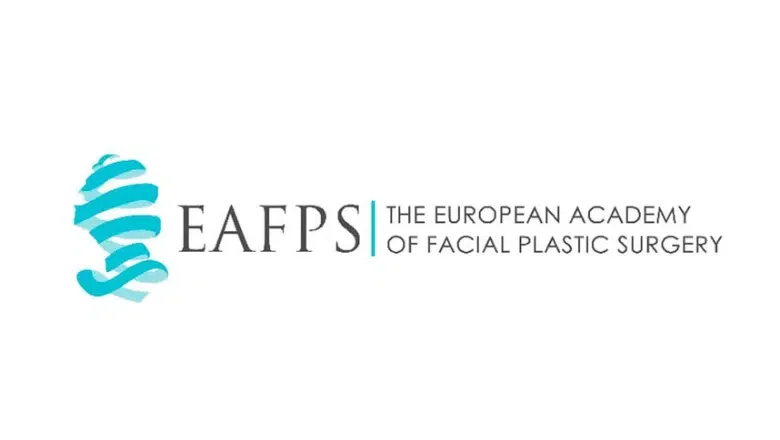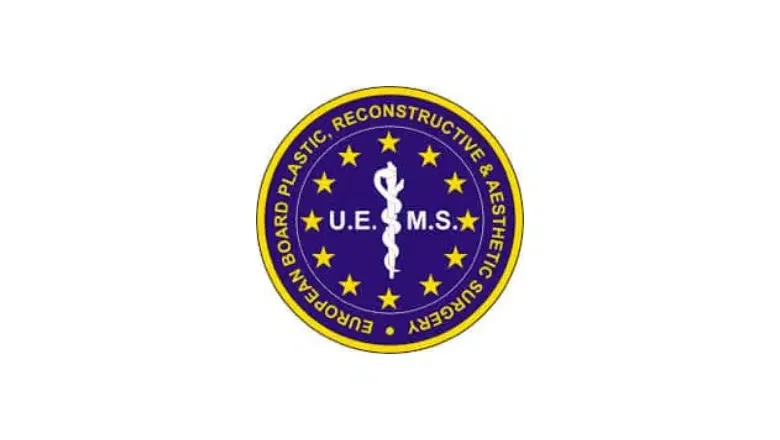The Size and Shape of a Perfect Nose
Your nose is a crucial part of your appearance. Most of us think we know what a nice nose looks like, but it’s not easy to pinpoint precisely what makes a nose perfect. What do you like about the colour, form, shape, and size of a nose? Is it how the nose looks from the front that shows whether it’s symmetrical, or does how it looks from the side make a difference? These are tough questions to work out, especially if you’re thinking about getting your nose altered in some way.
RELATED: Different Types of Nose Shapes – What are the Surgical Options?
Scientists have attempted to establish some basic rules to define what beauty is, but it remains a slippery concept to grasp. What people consider beautiful can vary significantly around the world. This might be because of differences in things like race, personal likes and dislikes, cultures, and the influence of social media stars, famous people, and the media.
RELATED: What Makes a Beautiful Nose?
At Centre for Surgery in London, our skilled plastic surgeons have done hundreds of nose surgery procedures. They are some of the best in their field. They know a lot about the way people in different places and from various backgrounds see beauty, and they use this understanding to help guide their work on nose surgeries. They keep up with the latest ideas in their field, so they’re always on the cutting edge of what’s going on.
What Makes a Nose Look Just Right?
When it comes to cosmetic surgery, both the surgeon and the patient face a big challenge: working out exactly what the patient wants their nose to look like. Since every face is unique, it’s really tough to explain what you want in a new nose. Knowing some of the key aspects or reference points of a nose can make it easier to talk clearly about this during the consultation. Here are some things that people often look at:
- Width – Many people want their noses to look slimmer. By making the nose less wide, it will look thinner.
- Nasal Tip – Some people have thick skin at the tip of their nose, which makes it look round instead of pointy. This is another feature that can be changed.
- Straighter Lines – A nose with humps or bumps may not be attractive to some. Many people want to make their nose look straighter by getting rid of these uneven parts. This can sometimes be done for a while with a special type of injection called a nose filler, but for a lasting change, surgery is needed.
- Nostril Size – The nostrils have the job of cleaning the air we breathe, but the way they look matters too. Surgery can make nostrils look smaller and more evenly matched, which can make the whole nose look better.
- Angle Between Lip & Tip – The angle between the tip of your nose and the top of your lip isn’t just an unimportant detail. It can make a nose look more masculine or feminine. This angle can be changed to get the look that the patient wants.
- The Shape of the Face – Lastly, even the most beautiful nose won’t look right if it doesn’t go with the rest of the face.
The idea is to make the nose appear as if it belongs to the face it’s on. It’s not about trying to make a “perfect” nose that looks good on its own. It’s about making changes that make the whole face look better, more balanced and harmonious.
Each of these points is something that the surgeon and patient need to think about and talk through. It’s a complex process that requires a great deal of understanding, effective communication, and skill. But the aim is always the same: to make a nose that fits the person it’s on, and helps them look the way they want to look. That might mean different things to different people, but a skilled surgeon will aim to understand exactly what each patient is looking for and do their best to make it happen.
What Makes a Nose Look Good?
The nose is right in the middle of your face, and it plays a big role in how balanced and well-proportioned your face appears. If the nose doesn’t look right, it can throw off the whole look of your face. The way we see beauty, particularly when it comes to our noses, has been shaped a lot by social media and films, TV and music stars. This has led to an increase in various beauty treatments, including surgery to reshape the nose, known as Rhinoplasty.
The idea of what’s beautiful keeps changing, but there’s one principle that’s remained the same over time. It’s called the golden ratio. This idea started in ancient Greece and has caught people’s attention ever since. It’s all about symmetry and patterns that repeat, known as fractal patterns.
What this means for the nose is that people tend to find noses attractive when they are in harmony with the rest of the face. There’s no one-size-fits-all answer, as different cultures and individual tastes play a big part. But many agree that a nose that fits well with your other facial features follows certain proportional guidelines, and looks balanced from different angles could be considered beautiful.
The golden ratio can be applied to noses too. It’s a mathematical concept that can be applied to determine the most pleasing proportions. Surgeons who perform rhinoplasty often keep this in mind when reshaping a nose, trying to create a look that fits with the ancient idea of balance and proportion. They aim to create a nose that not only looks good on its own but also blends seamlessly with the rest of the face.
Balanced Shapes and Even Sides
People often think of a face that has equal parts and is the same on both sides as the perfect face. Some are lucky to be born with a face that’s quite balanced and even, but not everyone has this natural symmetry. The good news is that with the help of cosmetic surgery, a face that looks more attractive and balanced can be achieved.
RELATED: How To Make Your Nose Smaller
You can think of the human face as being divided into three sections: the top, middle, and bottom. The top section is where your forehead and eyebrows are. The middle bit stretches from your eyebrows down to the bottom of your nose. The bottom part is everything from the base of your nose down to your chin.
When plastic surgeons work to enhance a face’s appearance, they often employ the concept of the golden ratio. This is an old concept that involves achieving the most pleasing proportions. By using this idea, surgeons can make both the vertical and horizontal aspects of the face match up in a balanced way.
Here’s how it might work:
- The top part of your face should align with the middle and bottom parts, creating a harmonious overall appearance.
- The sides of your face should be as mirror-like as possible, meaning that the left side should look like the right side.
- Everything should be in proportion so that no one part of the face stands out more than it should.
In using the golden ratio, cosmetic surgeons aim to create a face where everything fits together in a pleasing way. It’s not just about making individual features like the nose or lips look good. The goal is to create a well-balanced and attractive appearance, where everything is in its proper place and proportion. It’s an art as well as a science, drawing on age-old ideas about beauty to create a look that many people find appealing.
Choosing the Right Nose Shape and Size for Rhinoplasty
The diversity in human noses is intriguing but makes the process of rhinoplasty, or nose reshaping surgery, a complex one. Since different people have different kinds of noses, choosing the appropriate nose shape that fits a particular individual requires careful consideration. It’s not just about the nose itself but how it complements the rest of the facial features and the shape of the face. Here’s a comprehensive look at what goes into selecting the right nose shape and size:
Understanding Your Needs and Using Technology to Visualise the Result
The process of selecting a new nose shape is complex and requires extensive research. It’s essential to pick a skilled surgeon who can guide you through what will work for your particular face. Many surgeons use 3D stimulation to help their patients see what their noses will look like after surgery. Though not entirely accurate, this technology can provide a clear idea and help in decision-making.
Considering Different Parts of the Nose:
Upper Part of the Nose:
The upper part of the nose consists mainly of nasal bones. Common alterations in this area include removing a bump on the nose or narrowing the bridge. In some instances, the surgeon may change the height of the nasal bones to align with the angle between the top of the nose and forehead, resulting in a straighter appearance.
It’s crucial not to overdo this reduction as it can lead to indentation, an unnatural look, and even breathing problems. The challenge is to narrow and straighten the nose without going to extremes.
Middle Part of the Nose:
This area is mainly made of flexible cartilage, including the septum, a rectangular piece that divides the nostrils. The objective often is to make this region appear straighter, neither too wide nor narrow. If a patient has a deviated septum, correction may be necessary.
The surgeon must also consider reducing bumps and curves without overdoing it, as this can restrict breathing or make the nose tip look more prominent. Sometimes, special cartilage grafts are used to provide extra support, aiding in straightening and maintaining an open airway.
Tip of the Nose:
The tip of the nose, comprised of two C-shaped cartilages, plays a vital role in the overall aesthetics of the nose. Its size, shape, and projection can significantly influence the appearance and may necessitate alterations to achieve the desired look.
Some individuals are fortunate to have a nose tip that aligns perfectly with their facial structure, requiring no changes during a rhinoplasty procedure. For others, however, modifications to the nose tip may be essential to attain an ideal balance and harmony with the rest of the face. The goal is to ensure that the tip of the nose is in line with the height of the profile line, creating a pleasing contour that complements the facial features.
Common surgical alterations to the nose tip may include:
- Increasing Projection of the Tip: Enhancing the projection can add definition and character, particularly in noses that appear somewhat flat or recessed.
- Decreasing Projection of the Tip: Conversely, reducing the projection can help in cases where the nose tip seems overly prominent or extended, achieving a more balanced appearance.
- Narrowing a Boxy Tip: Some individuals may have a tip that appears too wide or boxy. Careful reshaping can create a more refined and elegant appearance.
- Symmetrical and Balanced Adjustment: An uneven or asymmetrical tip can be corrected through meticulous adjustments, ensuring that both sides of the nose are in harmony.
These alterations, though they may seem minor, require a surgeon’s skilled hand and artistic eye. Precise changes to the nose tip can create a natural, flattering look that enhances not only the nose itself but the overall facial appearance.
Skin of the Nose:
The skin of the nose is a fascinating aspect to consider when contemplating rhinoplasty. Just like other features of our body, the skin on our nose varies greatly from person to person, and this can have significant implications for nose surgery.
Different Skin Types
Imagine the skin of your nose as a sort of wrapping or envelope that surrounds and defines the underlying structure of the nose. People are born with different types and thicknesses of skin, each presenting unique considerations for a rhinoplasty procedure.
- Thick and Oily Skin: Some individuals possess a thicker, oilier skin type. This characteristic presents its challenges, as it often makes it difficult to observe significant changes post-surgery. Thick skin may reduce the ability to achieve finely detailed refinements to the nose’s shape. It also may take longer to settle into its final form after surgery, requiring more patience during the healing process.
RELATED: Can I Get Rhinoplasty if I Have Thick Skin?
- Thin Skin: Contrarily, those with thin skin may find that even the slightest alterations will be immediately noticeable. While this can allow for more precise shaping, it also might reveal imperfections or irregularities in the underlying structure. Thin skin requires a surgeon’s careful attention to detail, as any adjustments to the bone and cartilage will be readily apparent.
The Role of Skin in Rhinoplasty
During a rhinoplasty procedure, the skin itself is not removed or significantly altered. Instead, the focus is on reshaping the underlying structure, such as the bones and cartilage, to create the desired nose shape. The skin then redrapes over this new structure, adapting to the changes made underneath.
The skin’s unique characteristics can both enable and limit what is achievable with surgery. A skilled surgeon will carefully assess the skin type and its attributes during the consultation, providing realistic expectations about what changes can be accomplished.
Nasal Airway:
The final consideration is the nasal airway, which is essential for comfort, sleep, and overall well-being. If blockages are caused by curvatures in the cartilage or other issues, these can often be addressed during rhinoplasty. However, in some cases, separate treatment may be needed.
Harmonising Your Nose with Other Facial Features: The Importance of a Balanced Approach
Rhinoplasty, or the reshaping of the nose, isn’t just about altering the nose itself. Achieving a nose that is in harmony with the rest of the face is a key goal. While adjusting the nose alone can often lead to satisfying outcomes, it’s not always the sole solution, especially when other facial features impact the appearance of the nose. Here’s a closer look at how achieving balance is vital and how an expert surgeon plays a crucial role in the process:
Considering the Whole Face:
When contemplating rhinoplasty, it’s essential to examine the entire facial structure rather than focusing only on the nose. The nose must not only be aesthetically pleasing on its own but must also complement and balance the other features of the face. In some instances, the perceived problem with the nose might actually be related to other areas of the face.
The Role of Other Facial Features:
An example of this interconnectedness can be seen with individuals who have small or recessed chins, often leading to the appearance of a large nose. In such a situation, the nose may appear to protrude beyond the end of the chin, creating an imbalance. A chin implant or adjustment might be the correct solution here, rather than or in addition to altering the nose.
Choosing the Right Surgeon:
Finding a skilled and experienced nose surgeon who can accurately evaluate the entire face is vital. They must have the ability to assess not only the nose but also how it interacts with other facial features. The right surgeon will honestly tell you what is suitable for you, offering a balanced and holistic approach that might include suggestions for other minor facial alterations.
The Essential Nature of Transparent Communication: Finding the Right Path to Your Perfect Nose
Rhinoplasty, or cosmetic surgery to reshape the nose, is a delicate and personal decision. The path to the ‘perfect nose’ is individual and nuanced, dependent on various factors such as face shape, features, ethnicity, and personal preferences. It’s not a one-size-fits-all process, and the importance of an open and honest discussion with your surgeon cannot be overstated. Here’s a deeper look into why this transparent communication is so vital:
1. Selecting a Trustworthy Surgeon:
- Investment in Your Well-being: The right surgeon is not just a skilled professional but also a caring and attentive listener. They must be genuinely invested in understanding your needs and concerns.
- Freedom to Communicate: Your comfort level with the surgeon is paramount. If you find that you’re not able to openly express your concerns and desires, it’s a sign that you should continue your search for the right surgeon.
2. Recognising Individual Needs:
- No Universal Perfect Nose: What constitutes a ‘perfect nose’ differs immensely from person to person. What looks attractive on one individual might be completely inappropriate for another. Acknowledging this individuality is key.
- Understanding Your Vision: Your surgeon should grasp what you want, helping you to visualise the outcomes and aligning your expectations with what’s attainable.
3. Exploring Alternatives When Needed:
- Honest Assessment: Sometimes, the path to achieving your aesthetic goals might not be rhinoplasty but other alterations to facial features. An honest and insightful surgeon will guide you in the right direction.
- Avoiding Unrealistic Expectations: A surgeon’s integrity involves not just understanding what can be done but also openly communicating what can’t be achieved. Setting realistic expectations is part of responsible medical practice.
4. Extensive Research and Preparation:
- Know What You Want: While your surgeon’s expertise is essential, you also need to do your homework. Research, understand your own desires, and go into a consultation with a clear idea of what you’re seeking.
Nose Surgery at Centre for Surgery
At Centre for Surgery, we believe that everyone is entitled to feel their best, and we’re committed to helping you achieve just that. Nose surgery, or rhinoplasty, is more than just a cosmetic alteration; it expresses self-assurance and individuality. Here’s why choosing Centre for Surgery for your journey toward a perfectly sculpted nose is an exemplary decision:
Expert Surgeons:
- Top-notch Professionals: Our medical team consists of highly skilled and experienced surgeons who are at the forefront of their discipline.
- Specialisation in Rhinoplasty: With an extensive focus on nose surgeries, our surgeons have successfully completed hundreds of nose surgery procedures, perfecting the art of creating the nose that complements your unique face.
Comprehensive Consultations:
- Personalised Approach: We understand that every nose is as unique as the individual. Our thorough in-person consultations are designed to understand your personal desires and concerns.
- Honest Assessments: Our surgeons provide genuine and transparent advice, helping you set realistic expectations and guiding you towards the best procedure for your specific needs.
State-of-the-Art Techniques:
- Advanced Technology: Utilising cutting-edge techniques like 3D stimulation, we offer a glimpse into the post-surgery appearance, enabling you to make informed decisions.
- Minimally Invasive Procedures: We’re committed to employing the latest surgical methods to ensure minimal discomfort and quicker recovery times.
Exceptional Aftercare:
- Ongoing Support: Our relationship with you doesn’t end after the surgery; our comprehensive aftercare programme ensures that we are with you every step of the way during recovery.
- Accessible Care Team: Our dedicated care team is available to address any concerns or questions, ensuring a smooth and comfortable post-surgery experience.
A Legacy of Satisfaction:
- Proven Success: With a significant number of delighted patients across London and the UK, our success stories speak for themselves.
- Trust and Credibility: We’ve earned our reputation through hard work, professionalism, and unwavering dedication to patient satisfaction.
Your Path to Beauty Begins Here
Choosing Centre for Surgery for your rhinoplasty means entrusting your appearance to professionals who care deeply about your aesthetic goals and well-being. With our expertise, commitment to excellence and personalised approach, we strive to make your nose surgery a fulfilling and transformative experience.
Join us in our mission to enhance your natural beauty, and let’s create a look that’s unmistakably you. Get in touch with us today on 0207 993 4849 to book a consultation and take the first step towards a more confident and beautiful you. Your perfect nose is waiting, and we are here to help you discover it.

